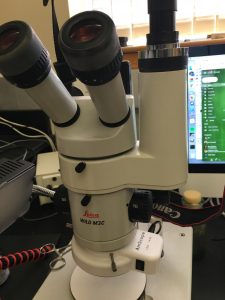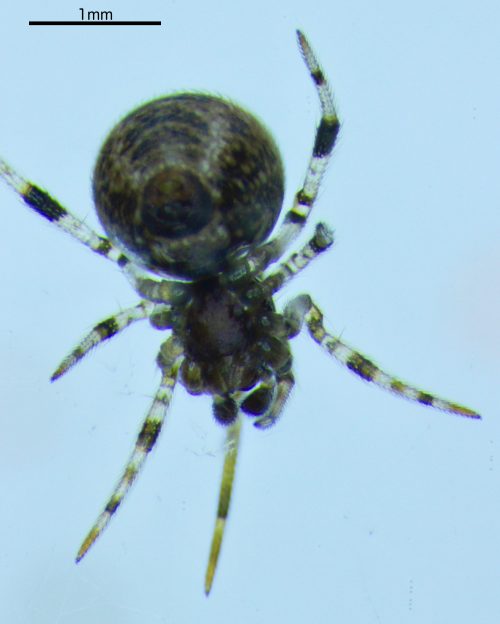This morning I resolved to figure out what was going on with my muddy images from microscope. The first step was a general cleaning, and I discovered a real horror. Here’s the trinoc head for my Wild M3C:
See that tube on the right, for the camera? I looked down it. GAAAAAA. Dust and dirt and I swear, cobwebs all over. It’s a 30 year old microscope, and we’ve had microscope technicians come through every couple of years to do general maintenance on all the teaching scopes, but that tube may not have been cleaned ever in all that time. There’s a very important mirror down at the bottom of that L-shaped widget, and I think the only way I can get at it properly is to dismantle the whole device — there are a couple of tiny metric hex bolts holding it all together, and I guess I’m going to have to take it apart and try not to break everything.
Anyway, I did push the dirt around a little with a microfiber cloth, and it’s slightly better, but I think it’s filmed over with something that is fouling the image. I took a test photo of this little guy, and it’s an improvement, but still far from perfect. The image through the eyepieces is beautifully crisp, so I’m definitely blaming the problem on that little mirror and decades of neglect.
‘Ware spider below the fold!
That looks like a juvenile male to me, the palps just showing the beginning bulge of the adult. One more molt and I can think about breeding!




Long handled cotton swab, “front surface mirror”/”coated optics” cleaning solution, and gentle swirling motion?
I’m guessing it’s a front-surface mirror, so hopefully it is just grunge on top of it and not fogging/corrosion damage of the coating itself, otherwise attempts to clean it will just remove more of the coating. At least it is not likely to be CA glue vapor; you would never get that stuff off without taking the coating with it (new, inexperienced tech used CA glue instead of 2-part epoxy to secure a lens in a tube attached to an instrument a few months ago and lucky the vapors only ruined that lens and not the very expensive diffraction gratings further in the instrument).
I haven’t cleaned the trinoc since when? — The Triassic.
That’s one pretty spider.
If you choose to take it apart for cleaning, I hope you have better luck than I did when I took a pair of binoculars apart to clean them. They were unusable after my misplaced efforts. Since you’re dealing with a single mirror (apparently) maybe proper alignment won’t be as crucial as it was in my binoculars.
See! This is exactly why you get a car microscope.
What are you using to process the images? Lightroom (which I use) and probably Canon’s free stuff can easily get rid of that purple fringing. I know that’s not your main issue right now, but it’d really help the images. Can’t wait to see more!
The mirror is presumably comparable to the mirror in a dslr camera. Similar to the parabolic mirror in a reflecting telescope: Silvered with a very thin layer of a protective coating. Cleaning is simple, but you got to do it right. Videos exist on Utube.
Cleaning a telesope mirror can be done with dish detergent. These get all kinds of crud on them, of course. If you can extract the mirror (and assuredly put it back right), then consider the procedure for that. Again, Utube is your friend. I know you will be careful.
Part of that problem seems kind of self-inflicted…experimental test subjects escaping, running rampant. :D
I know, 30 years, it’s probably not their fault.
Well, for next time you could leave a tiny note inside, maybe stuck to the side or somewhere where it doesn’t block the view. I’m thinking ink and parchment and writing a curly as humanly possible to give it a proper historic feel. If all else fails the parchment could at least be carbon-dated.